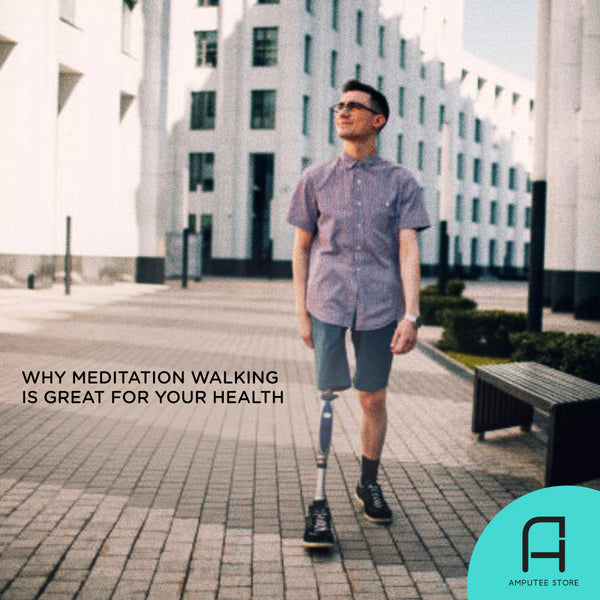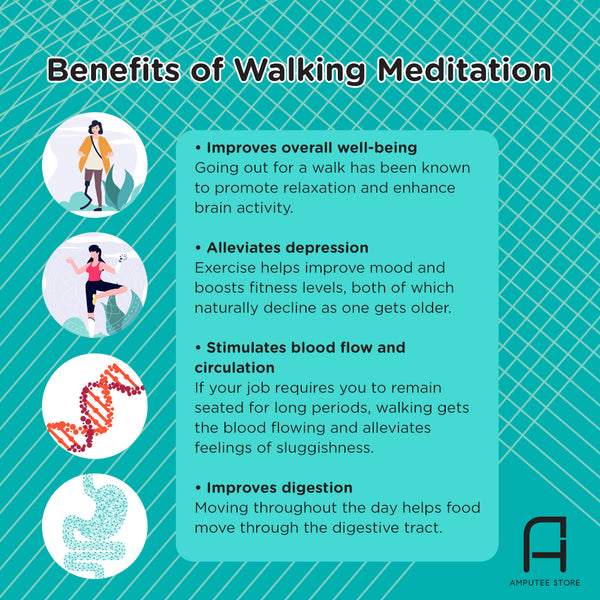Why Meditation Walking Is Great for Your Health
Walking meditation is a great way to take care of your body and mind. Just like the general mindfulness practice, walking meditation helps you develop connectedness, awareness, and calmness—three attributes that may be lacking in this busy world. Those who practice walking meditation report feeling more grounded, serene, and balanced.

You can practice walking meditation alongside a seated meditation practice. However, you can practice walking meditation alone—perfect if you don’t like sitting still and closing your eyes.
Walking meditation is typically done by walking back and forth in a straight line or a circle. It is also possible to meditate while walking over a longer distance, making this mindfulness practice easy to incorporate in your daily routine.
If you want to incorporate walking meditation in your wellness arsenal, you only need to remember to keep the pace slow and pay attention to the present moment. Although there are different techniques—kinhin, theraveda, and vipassana—you can also simply choose to stroll mindfully.
Numerous researchers have studied walking meditation and its health benefits. Below are some of the benefits you may enjoy should you decide to practice walking mindfully.
Benefits of walking meditation
Improves well-being
People gravitate toward the practice due to its positive effects on one’s well-being. Going out for a walk has been known to promote relaxation, as well as enhance brain activity. However, taking a walk in nature has additional benefits.
Researchers found that people who walked for 15 minutes in a bamboo forest showed improvements to their anxiety and stress levels, as well as blood pressure. If possible, go for a walk in a garden, park, or even a hiking trail. Being surrounded by nature helps you feel more balanced and increases your sense of well-being.
Alleviates depression
Walking meditation is considered an exercise; therefore, it can help alleviate depression. A study found that older people who regularly practiced walking meditation had reduced depression symptoms. As we age, make sure to incorporate regular activity, even something as simple as walking. Exercise helps improve your mood and boosts your fitness levels, both of which naturally decline as one gets older.
Boosts blood flow and circulation
If your job requires you to remain seated for long periods, walking gets the blood flowing and alleviates feelings of sluggishness. Mindful walking is a great way to give your mind and body a break, which increases energy levels.
Improve digestion
Healthcare professionals have long promoted regular movement for boosting digestion. If you’re feeling heavy after a huge meal or constipated, incorporate mindful walking in your daily routine. Making sure that you move throughout the day also helps food move through the digestive tract.
Walking meditation tips
For a successful walking meditation practice, keep in mind the following tips:
Focus on the present
Our minds are always buzzing with thoughts that it’s easy to overlook what’s happening in the present moment. When you’re walking, make a conscious effort to bring your mind to the present. Observe the sounds you hear, bodily sensations, and the rhythm of your breath. If a thought pops into your head, don’t quell it; observe it as it comes and goes.
Slow down
It’s virtually impossible to meditate when you’re in a hurry, so make sure to slow your pace even for a few minutes.
If walking outdoors is impossible for you, you can modify the practice to suit your circumstances. If you have a treadmill at home, use it while listening to a mindfulness recording. Pacing back and forth in a straight line is doable indoors. As long as you walk at a slow pace and tune in to the present moment, you can practice walking meditation anytime and anywhere.
Have you practiced mindful walking? Please share your tips with the rest of the community in the comments section below.












































































